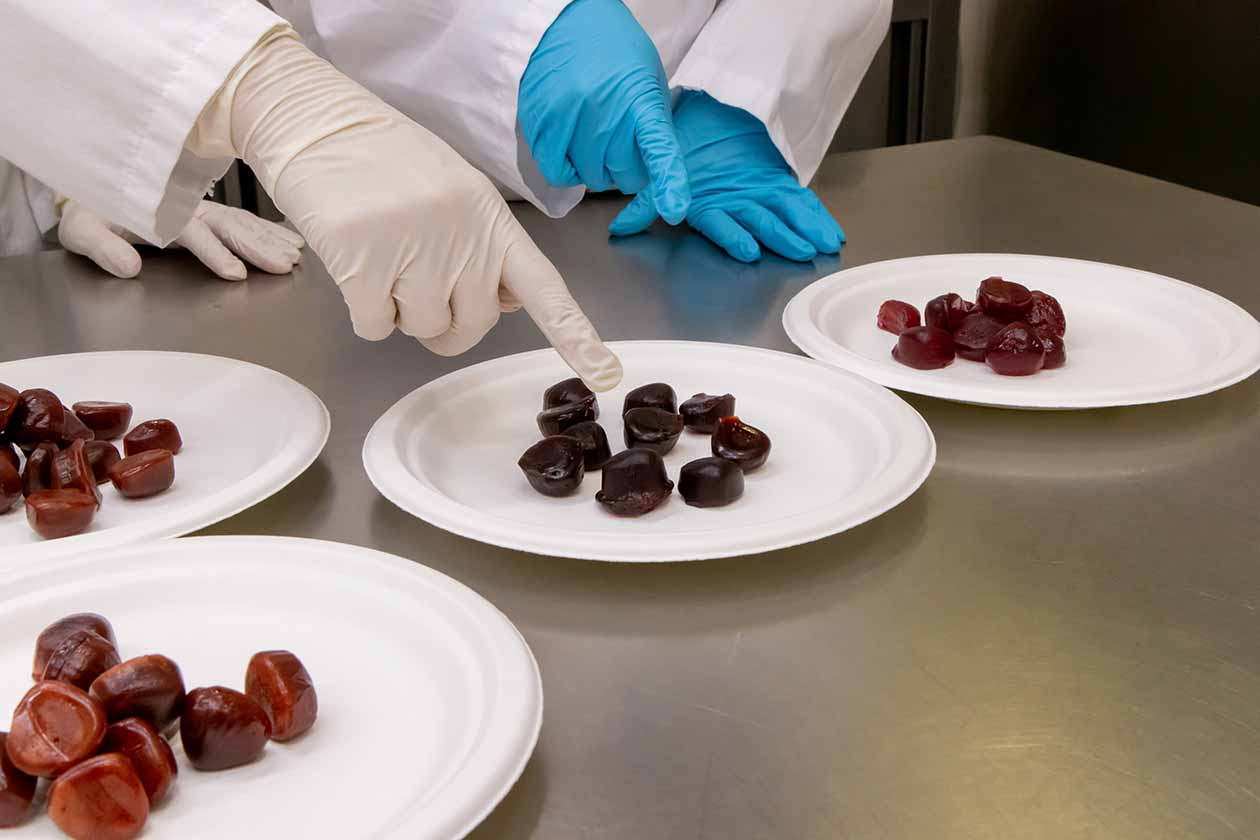From Europe, there is a commitment to various scientific strategies and policies aimed at promoting research for the development of healthy foods, implementing circular economy policies through the search for alternative sources of commercially viable ingredients. Agricultural byproducts are particularly interesting among the possible sources as they constitute excellent sources of dietary fiber. Among these are citrus, persimmon, and watermelon.
Faced with the need to increase food production sustainably, enhance the nutritional and functional quality of produced foods, and meet the demands of consumers who seek more natural products that positively impact their health, Europe is embracing diverse strategies and scientific policies to foster research aimed at developing healthy foods and implementing circular economy policies through the search for alternative sources of commercially viable ingredients.
Agricultural Byproducts: Alternative Sources for Food Ingredient Exploration
Among the potential alternative sources for food ingredients, agricultural byproducts are particularly interesting due to the significant amount generated annually and their excellent dietary fiber content. One of the challenges in their industrial implementation often arises from their seasonality. Thus, a potential strategy is to design biorefinery processes that can be applied to residues obtained in different periods of the year.
Comprehensive Valorization of Citrus, Watermelon, and Persimmon for the Production of Pectins and Extruded “Topping” Products
In this context, we are working on the VALUÓS project (Comprehensive and Continuous Valorization of Agricultural Residues from the Valencia Region for the Production of Functional Food Ingredients), where we are conducting comprehensive valorization of agricultural residues generated throughout the year to obtain value-added ingredients. Specifically, we are developing a comprehensive valorization strategy covering most of the annual calendar, focusing on three major crop groups: citrus, watermelon, and persimmon, along with their respective byproducts. Specifically, the strategy is based on a cascading valorization approach, obtaining:
- Pectin-Rich Extracts: Firstly, pectin-rich extracts with various functionalities useful in the food industry.
- Extruded Products (Expanded “Toppings”): Using extrusion processing of the remaining fiber-rich byproduct to develop expanded “toppings” products.
The Gelling Power of Pectins from Agricultural Byproducts: Applications in the Food and Pharmaceutical Industries
Pectin is a complex polysaccharide with emulsifying, gelling, and texturizing properties. The high demand for pectin and the diversity of physicochemical and functional properties associated with its molecular structure motivate the search for and study of other sources.
Pectins are located in the cell walls of most terrestrial plants, making them widely available. However, commercially, they are only obtained from apple pomace and citrus peel due to their high extraction yield.
Watermelon and persimmon are highly interesting sources of pectin
Both watermelon and persimmon are highly interesting sources of pectin, with estimated contents of 13-35% for watermelon and 4-12% for persimmon. Therefore, these byproducts are a potentially very profitable source of pectin, as well as being a sustainable and high-value-added option, promoting the circular economy.
Furthermore, their functional and technological properties can be adjusted depending on the extraction conditions. In this regard, it is worth highlighting the importance of proper structural and functional characterization to design the extraction processes according to the desired final application.
The structure and composition of pectins are very heterogeneous and difficult to determine, depending on the extraction source and method, consequently affecting their functional and technological properties.
In fact, properties such as their emulsifying and stabilizing capacity depend not only on the extraction source, which will determine, for example, the monosaccharide composition of the pectin, but to a large extent on the extraction conditions, which will in turn affect the molecular weight, residual protein content, and structure of the pectin.
As of today, commercial pectins are only produced using citrus waste or apple pomace and through processes aimed at obtaining highly purified ingredients. In the VALUÓS project, we are working on two innovations in this area:
- Simple and Sustainable Process for Pectin Extraction: Firstly, within the extraction process itself, aiming to simplify it to make it more sustainable and to obtain pectins with additional functionalities. With the developed extraction processes and based on previous experience, we expect to increase the emulsifying capacity of the obtained pectins by at least 50% compared to commercial ones.
- Persimmon and Watermelon Byproducts for Pectin Extraction: We are utilizing two novel and alternative sources of agricultural waste (persimmon and watermelon), highly relevant and with high production volumes, for pectin extraction. The different structure of these new pectin sources may also expand their potential uses, for applications where other food ingredients are currently used.
As mentioned earlier, the stabilizers/texturizers currently used in desserts (starches, gums, and carrageenans) are expensive products, and in some cases, their extraction leads to the overexploitation of natural resources.
Application in Dairy Products: Pectins Obtained through Byproduct Valorization
In this project, we are studying the possibility of replacing some of the previous stabilizing/texturizing ingredients in the formulation of dairy desserts with pectins obtained through byproduct valorization. Our ultimate goal is to ensure that this substitution does not affect the organoleptic or physicochemical properties of the final product.
The use of pectins obtained through byproduct valorization offers several advantages:
- Reduces the costs of the final product, allowing greater consumer access.
- Facilitates the utilization of an agricultural waste by converting it into raw material.
- Enables the development of innovative desserts that include this pectin, thus harnessing the additional functionalities it offers.
- Allows for the reduction of sugar content through partial substitution with pectins.
Toppings rich in fiber for desserts made from citrus, persimmon, and watermelon by-products
Another line of work in our project focuses on using the fiber-rich fraction remaining after the extraction of pectin from various by-products to develop extruded products (such as snacks or toppings) with a high fiber content, possibly also containing interesting antioxidant molecules from a nutritional perspective.
For obtaining ingredients and molecules with functionalities, we employ sustainable extraction processes.
Aligned with sustainability, another current trend is towards the simplification of extraction processes. There is increasing evidence related to the nutritional benefits of less purified fibers. Therefore, although traditional industrial processes have been designed to obtain highly purified molecules and ingredients, the design of simpler processes entails a series of undoubtedly attractive advantages not only at the industrial implementation level (simplification of procedures, economic advantages of processes, higher yields of obtained substances) but also at the nutritional level.
In this regard, it has been observed in various types of biomass, such as marine biomass, that simplifying processes results in ingredients with equally interesting technological properties, but also with clear functional benefits, related to the non-removal of bioactive molecules during simplified extraction processes.
In the Valuós project, we are obtaining fiber-rich products from agricultural by-products through extrusion processes.
Extrusion is a food processing technique at high temperature and short time (HTST) that produces several changes in the shape, structure, and composition of the ingredient/product. It allows starch gelatinization, denatures protein, and forms complexes between lipids, starch, and proteins that lead to changes in the microstructure, chemical characteristics, and macroscopic shape of the product.
It is a very versatile technology that accepts ingredients from by-products of the agri-food industry and, being a high-temperature short-term process, guarantees product safety without significantly altering its nutritional value.
Incorporating fibers into extruded products: an opportunity for by-product utilization
Studies on the incorporation of fiber into extruded products generally show that extrusion improves the proportion of soluble fiber. Additionally, combining fiber with texturizing agents such as starches, calcium carbonate, and other ingredients, along with adjustments to process conditions, enhances the distribution of steam bubbles inside the product, increasing nucleation and uniformity.
This makes the incorporation of fibers into extruded products an opportunity for the utilization of by-products and the production of expanded products that can be used as toppings in dairy desserts due to their nutritional contribution.
IATA-CSIC, AINIA, and Productos lácteos Romar, aligned in the valorization of agricultural by-products
All of this is being developed within the framework of a consortium covering the entire value chain, including IATA-CSIC, AINIA, and Postres lácteos Romar. To complete the value chain, we also have the collaboration of ANECOOP, who provides us with the by-products. This project is funded by the AVI (Agencia Valenciana de Innovación).
IATA is working on obtaining pectins from various agricultural by-products such as persimmon, watermelon, and citrus fruits on a laboratory scale, characterizing them, and implementing processes to improve their functionality.
At AINIA, we have focused on evaluating the technological properties of persimmon pectins obtained on a laboratory scale by IATA for the production of confectionery. The initial results indicate good gelation properties of persimmon pectins, in addition to resulting in a product with a more natural appearance that allows for lower inclusion doses compared to other commercial pectins.
Postres lácteos Romar is working on evaluating new formulations using the pectins obtained from the processes developed by IATA in products such as custards and creams.
Furthermore, at AINIA, we have begun to work on the utilization of fiber-rich fractions resulting from the extraction processes of persimmon and watermelon in formulations to obtain new expanded extruded ingredients for incorporation into desserts. These are significant advances in obtaining compounds of interest for the food industry from its own by-products.





